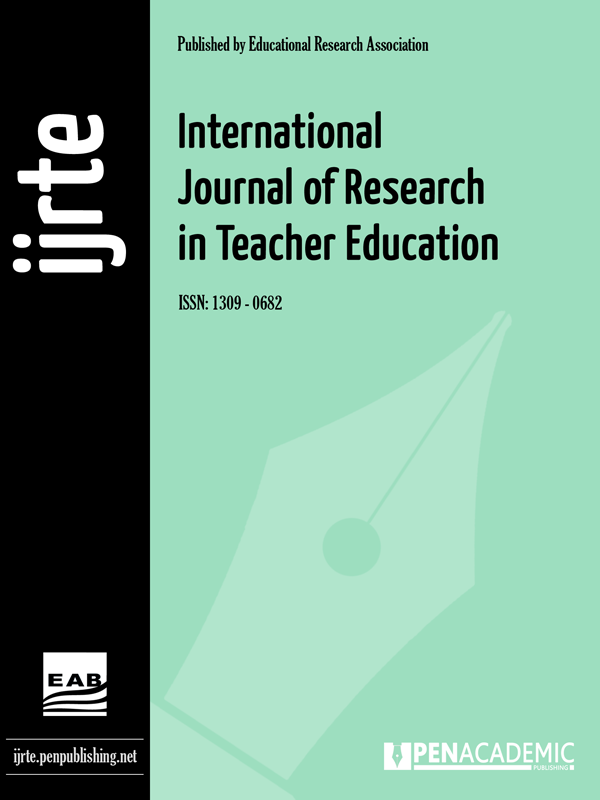- Akman, B., Özen-Altınkaynak, Ş., Ertürk-Kara, H. G. ve Can-Gül, Ş. (2015). Okul öncesi öğretmenlerinin müze eğitimine ilişkin görüşleri. Uludağ Üniversitesi Eğitim Fakültesi Dergisi. 28(1), 97-115. [Google Scholar]
- Andre, L., Durksen, T., & Volman, M. L. (2016). Museums as avenues of learning for children: a decade of research. Learning Environments Research, 20(1), 47–76. doi:10.1007/s10984-016-9222-9 [Google Scholar] [Crossref]
- Braun, V., & Clarke, V. (2013). Successful qualitative research: A practical guide for beginners (First edition). Sage. [Google Scholar]
- Chiovatto, M. (2020). In defense of museum education. ICOFOM Study Series, 48(2), 70-84. [Google Scholar]
- Coombs, H. (2022). Case study research: single or multiple [White paper]. Southern Utah University. https://doi.org/10.5281/zenodo.7604301. [Google Scholar] [Crossref]
- Dörnyei, Z. (2007). Research methods in applied linguistics. Oxford University Press. [Google Scholar]
- Duban, N. (2019). The opinions of primary school teachers regarding to the use of museums in science courses. Journal of Education and Training Studies, 7(2), 111-119. [Google Scholar]
- Falk, J. H., & Dierking, L. D. (2000). Learning from museums: Visitor experiences and the making of meaning. AltaMira Press. [Google Scholar]
- Gheyle, N., & Jacobs, T. (2017). Content analysis: A short overview. Internal research note. [Google Scholar]
- Gündüz, M., Başpınar, Z., Taş, M., & Büyükkarcı, A. (2017). Müzelerin öğrencilere hangi değerleri kazandırdığına yönelik sınıf öğretmeni adaylarının görüşleri. The Journal of Academic Social Science, 5(55), 259-267 [Google Scholar]
- Hein, G. E. (2006). Museum education. In S. MacDonald (Ed.), A companion to museum studies (pp. 340–352). Blackwell Publishing Ltd. https://doi.org/10.1002/9780470996836.ch20 [Google Scholar] [Crossref]
- Hsieh, H.-F., & Shannon, S.E. (2005). Three approaches to qualitative content analysis. Qualitative Health Research, 15(9), 1277-1288. [Google Scholar]
- Kalamees-Ruubela, K., & Läänemets, U. (2012). Teaching literature in and outside of the classroom. Procedia - Social and Behavioral Sciences, 45, 216-226. [Google Scholar]
- Kara, B., Sak, M., Balçın, M. D., & Mertoğlu, H. (2020). Fen bilimleri öğretmenlerinin müze eğitimi hakkındaki görüşleri. Akademik Sosyal Araştırmalar Dergisi, 8(108), 318-346. http://dx.doi.org/10.29228/ASOS.44864 [Google Scholar]
- Lemon, N. & Garvis, S. (2014). Perceptions of pre-service teachers value of art museums and galleries. Journal of Museum Education, 39(1), 28-41. [Google Scholar]
- Mentiş-Taş, A. (2012). Primary-grade teacher candidates’ views on museum education. US-China Education Review A, 6, 606-612. [Google Scholar]
- Miles, M. B., & Huberman, M. (1994). Qualitative data analysis: An expanded sourcebook. Sage Publications. [Google Scholar]
- Moisan, H. (2009). Partners in process: how museum educators and classroom teachers can create outstanding results. The Journal of Museum Education, 34(4), 23-40. [Google Scholar]
- Mpho, M. & Anthony, L. (2012). Investigating perceptions of teachers and their learners about museums visits. Paper presented at the 20th Annual Southern African Association for Research in Mathematics, Science and Technology Education Conference, Lilongwe, Malawi. [Google Scholar]
- Öner, G. (2022). Self-efficacy beliefs of teachers who participated in museum education certificate program as regards museum education. International Journal on New Trends in Education and Their Implications (IJONTE), 13(1), 66-75. [Google Scholar]
- Şekerci, H. (2022). How do prospective elementary school teachers evaluate practices in the elective museum education course? A case study. Research in Pedagogy, 12(1), 163-185. [Google Scholar]
- Singh P. K. (2004). Museum and education. Orissa Historical Research Journal, 47(1), 69-82. [Google Scholar]
- Solmaz, K. (2005). Sosyal bilgiler öğretmenlerinin müze eğitimine yönelik görüşleri ve uygulamaları. Munzur Üniversitesi Sosyal Bilimler Dergisi, 4(7), 40-54. [Google Scholar]
- Stratton, S. J. (2021). Population research: Convenience sampling strategies. Prehospital and Disaster Medicine, 36(4), 373–374. http://dx.doi.org/10.1017/s1049023x21000649 [Google Scholar]
- Taranova, T. N. (2020). Virtual museum technologies and the modern educational process. ARPHA Proceedings 3: VI International Forum on Teacher Education, 2513-2521. https://doi.org/10.3897/ap.2.e2513 [Google Scholar] [Crossref]
- Weber, K. E. (2022). The role of museums in educational pedagogy and community engagement. College of Education Theses and Dissertations. 254. https://via.library.depaul.edu/soe_etd/254 [Google Scholar]
- Yıldırım, A., & Şimşek, H. (2008). Sosyal bilimlerde nitel araştırma yöntemleri (Güncelleştirilmiş geliştirilmiş 6. baskı), Seçkin Yayıncılık. [Google Scholar]
- YÖK (2018). Yeni öğretmen yetiştirme lisans programları. Retrieved from https://www.yok.gov.tr/kurumsal/idari-birimler/egitim-ogretim-dairesi/yeni-ogretmen-yetistirme-lisans-programlari [Google Scholar]
- Zarrin, A., & Farha (2022). Role of museums in creating environmental awareness among masses. International Journal of Novel Research and Development (IJNRD). 7(12), 31-39. [Google Scholar]
|


